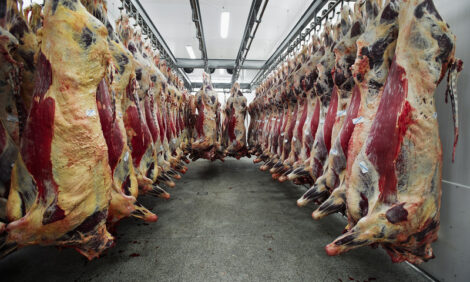



Cattle on Feed: As Expected Placements Drop Again
US - On Friday (October 19st), USDA’s National Agricultural Statistics Service released the monthly Cattle on Feed report. The report provided insight into some important trends. Overall, during the month of September, the marketings of cattle by feedlots and placements of new cattle into yards were below expectations, writes James Robb, Director of the Livestock Marketing Information Centre.
And those expectations called for large year-on-year drops. As of October 1st, the monthly inventory of cattle on-feed in US feedlots with a capacity of 1,000 head or more was 2.6 per cent (293,000 head) below a year ago, which was reasonably close to the pre-report estimate average of down 2.2 per cent. The number of cattle on-feed is being reduced compared to a year ago due to: 1) smaller calf crops in recent years; and 2) very high feedstuff costs keeping cattle feeding closeouts deep in the red.
The number of head marketed was reduced mostly because the month of September had two fewer workdays to process cattle than a year ago. Still, the number fell a little short of pre-report estimates. Daily average marketings were 2.5 per cent or 2,200 head below a year ago. Rather slow marketings and very good cattle feeding weather in the last two months have contributed to record-high steer dressed weights.
USDA reported placements of cattle into feedlots declined dramatically compared to a year ago, dropping 19.5 per cent (down 465,000 head). Typically placements increase between August and September by at least about 200,000 head, but that did not happen this year. September’s placements were below August’s (down 3,000 head), the first decline for those months since 2006. Of the 11 individually reported states, only Arizona had more cattle entering feedlots than a year ago. USDA’s data on placements by weight category showed large declines across the board.
Each quarter, USDA estimates a class breakdown of the cattle on-feed (steer, heifer, and cow/bull). Those data for October 1 showed that the entire year-on-year inventory decline was in heifers. In the 1,000 head and larger feedlots, the number of steers on-feed was up 25,000 head from 2011’s while the number of heifers dropped by 331,000 head. The number of cows/bulls in feedlots also declined. But readers should not jump to the conclusion that those data indicate national herd expansion plans. Calf crops have been shrinking in recent years, and the 2012 crop is likely 800,000 to 850,000 smaller than 2011’s. So, this year alone, there were at least 400,000 fewer US heifers born than a year ago. Still, if that trend persists throughout the fall quarter, the national number of heifers as of January 1, 2013 held as beef cow replacement purposes could be above the low level of a year earlier.
What do the recent Cattle on Feed reports indicate for fed cattle prices? Smaller numbers on-feed will translate into reduced slaughter and higher prices than a year earlier. How high depends on the demand for slaughter cattle by packers. Futures market prices already anticipate higher prices. So does the Livestock Marketing Information Center (LMIC). But the LMIC at this time is probably a bit more cautious about demand than is the futures market. Still, record high fed cattle prices are forecast for calendar year 2013 (up five per cent to seven per cent compared to 2012’s) and each quarter of the year should post strong year-over-year increases.
Further ReadingYou can view the full report by clicking here. |


